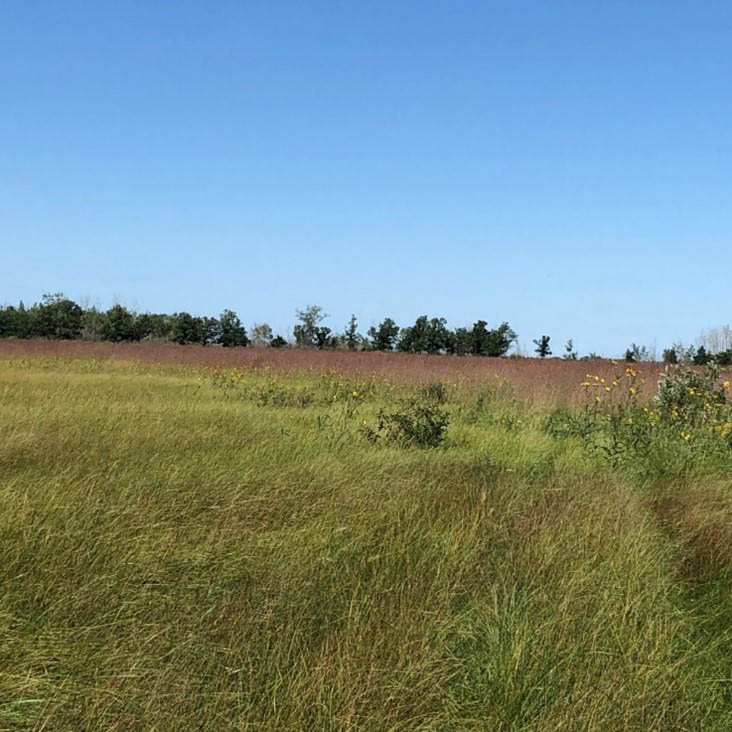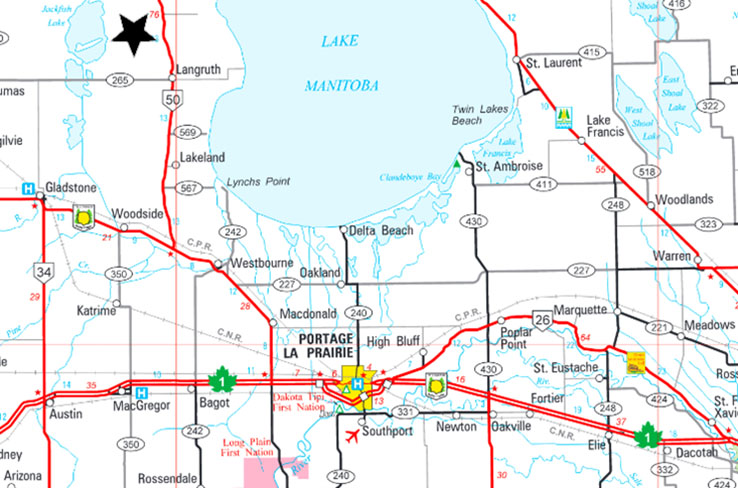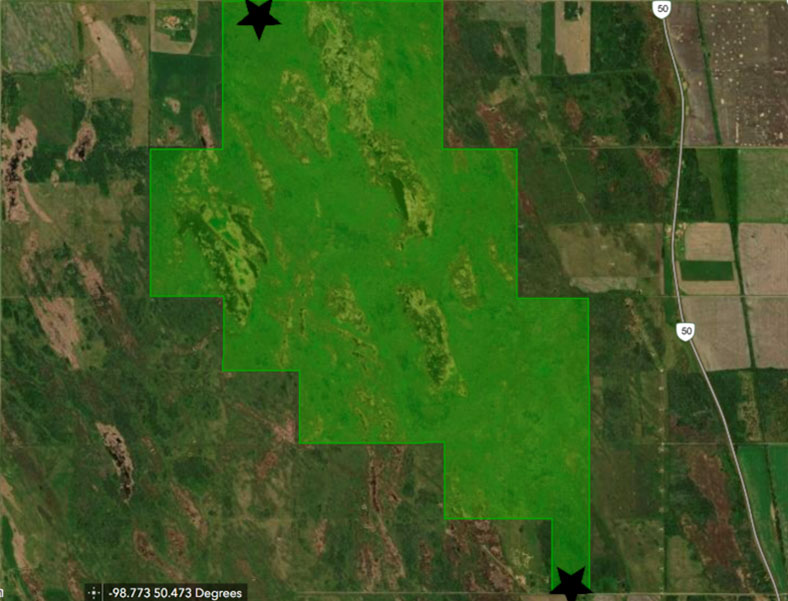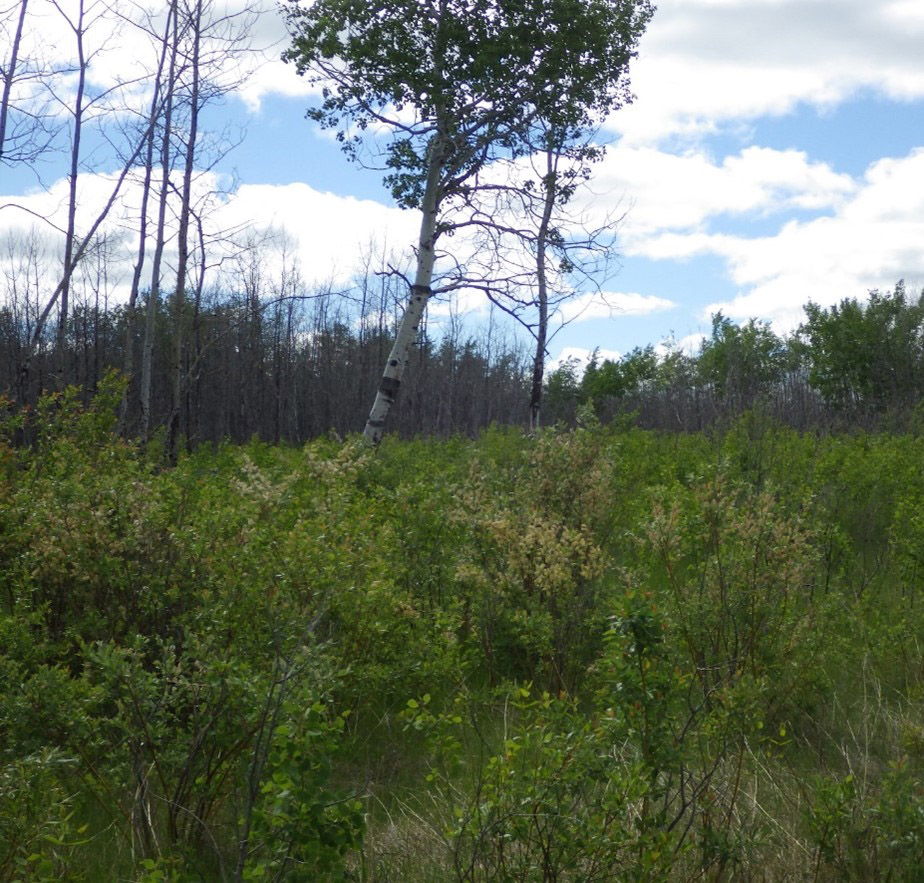
By Dennis Schindler, MWF Land and Resource Manager
The Langruth Wildlife Management Area (WMA), is located in the Rural Municipality of Westlake-Gladstone. It lies approximately 4 miles north east of Langruth and 2 miles east of Big Grass Marsh encompassing approximately 4,400 acres or 6.9 square miles. Historically, the area was a diverse mosaic of aspen and oak forests and rough fescue prairie. The ridge and swale terrain has created large sedge wetlands in lower lying areas.
You can visit this WMA by traveling approximately 150 km north west of Winnipeg via PTH 50. It is easily accessible (north and south boundaries) via all weather gravel roads that are maintained by the Rural Municipality.
Designated by Order-In-Council on August 6, 1967, the initial intent on establishment was to preserve excellent sharp-tailed grouse habitat and good white-tailed deer and waterfowl habitat. Initial management entailed the clearing of the boundary of the Wildlife Management Area for the purpose of establishing a fireguard. During the summers of 1980 and 1981, approximately 10km of fireguard were worked up with the intent on establishing alfalfa for protection against fire and providing haying opportunities for local area farmers.
Physiography and Soils
The Langruth WMA is located on the edge of the Westlake Till Plain. The land surface is level to very gently undulating, sloping gradually to the east. Surface drainage is poorly developed with many undrained swales and sloughs. The area is characterized by high groundwater levels. Soil materials in the WMA were deposited during the last glaciation and during the time of glacial Lake Agassiz. The Westlake Till Plain consists of gently undulating and ridged deposits of extremely calcareous, water worked, loamy glacial till with moderately to severe stoniness. Soils in the WMA have been surveyed and classified agriculturally as Class 4 and 5 with shallow profiles and moderate to severe stoniness and areas of significant wetness. As such, the Langruth WMA is unsuitable for annual crop production. Given these limitations, managed grazing would be the recommended agricultural use and is being considered as part of the management prescription.
Present Assessment of Langruth WMA
Over the course of the summer we spent a few days in the Langruth WMA assessing habitat quality and identifying opportunities for future management. Mature aspen stands identified on the WMA in the 1970’s and 1980’s are now in senescence (dying of old age) and have been impacted significantly by fires in the early 2000’s. As a result of aspen deadfall and the regeneration of young aspen as well as willow and hazel, the landscape has changed significantly over time. There are large areas in the WMA that have seen a loss in plant species biodiversity over time. As well, the aspen and willow regeneration is very dense off the existing trails with little sign of game trails through these dense areas.
The most northerly part of the WMA contains some of the better upland bird habitat and significant biodiversity. Native species of interest in the northern part of the WMA include big blue stem, prairie cord grass, prairie June grass, wild sunflower, aster and wild licorice. Areas in north are tall grass prairie with bur oak/silverberry with red osier dogwood/willow in low lying areas. A few sharp-tails were seen in this area over the course of the summer.
Opportunities for Improved Management
As indicated in “A Land Management Plan for the Langruth Wildlife Management Area” (Joynt, 1983), potential was identified for improving habitat suitability for sharp-tailed grouse. At that time, Joynt recommended “protecting the open grasslands by retarding aspen regeneration”. Certainly, this holds true today as the grasslands continue to remain under threat from aspen and willow encroachment. The northern 25% of the WMA remains in bur oak/tall grass prairie/shrub cover and requires minimal management to maintain and enhance the existing habitat. However, the balance of the WMA requires a multiple prong approach to improving habitat. Removal of senesced aspen, reducing the young and the dense wooded cover through mowing and mulching to create a favourable habitat mosaic, could be an approach used and maintained through managed grazing.
The Future
The Minister of Agriculture and Resource Development, Hon. Blaine Pedersen has been given the mandate to “Working strategically with partners to enhance management and sustainable use in our wildlife management areas;” With this mandate in mind, the Manitoba Wildlife Federation has taken up the challenge to assist the Minister in this task by submitting a proposal to the Fish and Wildlife Habitat Enhancement Fund. The MWF has proposed two Pilot Management Projects on Wildlife Management Areas utilizing all management tools available to improve wildlife habitat. We have been working closely with the Wildlife and Fisheries Branch on turning these proposals into action.
The Langruth WMA is one of these proposed pilots and we have spent the summer in the field carrying out preliminary baseline data collection, identifying management prescriptions that are suitable and putting together a plan of action should the Pilots be approved. At the same time, we have been communicating with other potential partners including local game and fish associations, area beef producers and organizations across the province with similar goals in land management.
It is important to seek guidance with local people who have a knowledge of the land and can add valuable input into the implementation of the management prescriptions. Interest in our pilot proposals is significant and given other potential funding sources we see opportunities in expanding the work to additional WMA’s in the future.
Collaboration and partnerships are keys to success in managing land for improved wildlife habitat, biodiversity, and healthy ecosystems. We look forward to building on these positive partnerships, influencing positive change on the landscape in our great resource, the provinces’ Wildlife Management Areas.




